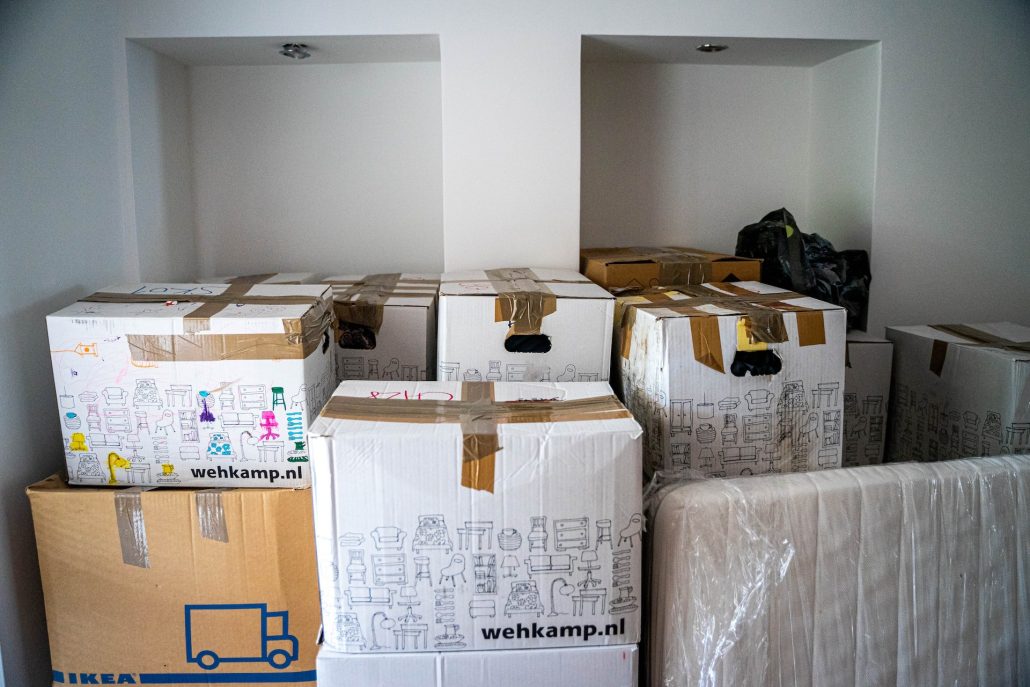5 Compelling Reasons to Make a Moving Timeline
Moving from one place to another, be it across the city or the country, is no small feat. The thought of transferring your entire life, packed neatly into cardboard boxes, can be daunting. But the moving blues might lessen if you’re moving from an expensive city like Miami to a comparatively more affordable place. Why did we mention Miami? Well, because Miami’s cost of living is 21% higher than the national average. It can prove difficult for many to navigate today’s inflation-ridden era with such high living costs.
Despite this, many challenges come with moving, from sorting through belongings and packing them safely to coordinating with moving companies and setting up in a new place. One strategy that can simplify this multifaceted task is creating a moving timeline. It’s a structured plan that breaks down the moving process into manageable tasks spread over weeks or even months. Let’s delve into why making such a timeline is not only a good idea but essential.
1. Professional Coordination
When you’re moving, especially over vast distances, hiring a professional moving company is often the best choice. These experts have the equipment, skills, and experience to ensure that your belongings reach their new home safely. However, to reap the full benefits of their expertise, proper coordination is crucial.
Consider Miami long distance moving companies like Bekins of South Florida as an example. They’re in high demand, given Miami’s appeal as a prime living location. Due to the influx and outflux of residents, these companies might have tight schedules. Without proper planning, you might find yourself in a bind, with packed boxes but no movers available on your desired date.
That’s where the moving timeline becomes indispensable. When you have a clear plan laid out weeks or months in advance, you can book your chosen Miami moving company at the earliest. This early booking ensures you get the desired date and time, and it might even save you some money, as last-minute bookings can be pricier.
2. Efficient Packing Process
If there’s one task in moving that consumes a lot of time and energy, it’s packing. You’re not just placing things in boxes; you’re ensuring that your belongings are safe, organized, and easy to unpack later.
Starting with a timeline allows you to tackle this immense task in stages. Instead of a frantic packing session a few days before the move, you can begin weeks ahead. This headstart lets you declutter, deciding what to keep, what to donate, and what to discard. A less cluttered home means fewer items to pack, transport, and unpack.
A timeline also enables you to prioritize. Items that aren’t immediately necessary can be packed weeks ahead. Think seasonal clothing, extra linens, or those dishes you only use on special occasions. As moving day approaches, you can then pack daily essentials. This phased approach ensures that you’re not left rummaging through boxes looking for your work shoes or the coffee maker on a moving day.
3. Financial Preparedness
Moving can be an expensive endeavor. There’s the cost of packing materials, hiring movers, transporting items, and sometimes, unexpected expenses that pop up. Having a moving timeline aids in forecasting these expenses.
When you map out tasks in advance, you can also allocate funds accordingly. Need to buy sturdy boxes or bubble wrap? Your timeline will give you the foresight to shop around, compare prices, and buy in bulk if needed, potentially saving money.
Unexpected costs are less daunting when you’re prepared. By spreading out moving-related tasks and purchases over several weeks, you can adjust your budget, ensuring you have funds ready for any last-minute requirements.
4. Smooth Transition of Utilities and Services
One aspect of moving that can often slip through the cracks in the midst of the chaos is the transition of utilities and services. It’s more than just a minor inconvenience to move into your new place and realize that there’s no electricity or running water. Likewise, you wouldn’t want to be billed for utilities at your old residence when you’re no longer there.
With a well-laid-out moving timeline, such oversight becomes a rarity. You can designate specific dates for when you’ll contact your utility providers to inform them of the move. It ensures that services like electricity, water, and gas are disconnected at your previous home right after you leave and are up and running at your new place by the time you arrive.
Additionally, think of the numerous other services and subscriptions linked to your address – magazines, newspapers, monthly subscription boxes, and even critical mail. Updating your address with the postal service in your timeline ensures a seamless transition of mail. It saves you the headache of missed bills or important correspondences. A moving timeline acts as a reminder to make these necessary changes, ensuring continuity and preventing any post-move complications.
5. Reduced Moving Stress
The psychological aspects of moving are just as crucial, if not more, as the physical ones. The very act of uprooting oneself and starting over in a new place can be emotionally draining. Add to this the myriad tasks associated with moving, and stress levels can skyrocket.
However, when you break down the mammoth task of moving into bite-sized pieces over weeks or even months, the stress is reduced substantially. There’s a certain calm that comes with knowing what needs to be done and when. Each ticked-off task on your timeline is a step closer to a successful move and can bring a sense of achievement.
A structured timeline ensures that you’re not scrambling at the last minute, trying to cram multiple tasks into a short period, and allows you to plan visits to a dog boarding kennel for your pet’s care without stress. This spread-out approach also ensures that you have enough time for relaxation.
Conclusion
The act of moving homes is a significant life event, filled with a blend of excitement, nostalgia, and undeniable stress. But with tools like a moving timeline, the journey becomes more manageable and less overwhelming. Whether it’s coordinating with professional movers, ensuring your utilities are smoothly transitioned, or simply giving yourself time to say goodbyes, planning is undeniably the key. So, as you gear up for your next big move, remember to give yourself the advantage of a well-thought-out timeline.



 For small business owners, reducing operational costs is essential for the success of the company. With rising overhead expenses and competition from larger companies, it can be difficult to keep up with the ever-increasing costs associated with running a business. Fortunately, there are several strategies to use for reducing operational costs and ensuring that a small business remains profitable.
For small business owners, reducing operational costs is essential for the success of the company. With rising overhead expenses and competition from larger companies, it can be difficult to keep up with the ever-increasing costs associated with running a business. Fortunately, there are several strategies to use for reducing operational costs and ensuring that a small business remains profitable.
